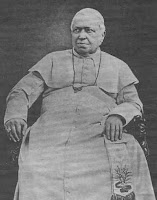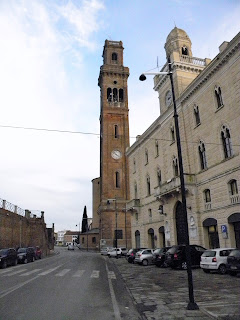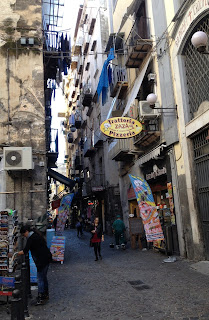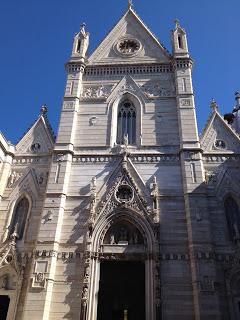Pisa-born criminal became legend in Brazil
 |
| Brazilian police mugshots of Meneghetti in two of the many disguises he used while on the run |
Gino Amleto Meneghetti, a small-time thief in Italy who became a
romanticised figure for his criminal exploits after emigrating to Brazil, was
born on this day in 1878 in Pisa.
His early days were spent in a fishing village outside Pisa,
but his father could find only low-paid work and moved the family to a
different neighbourhood so he could take a job in a ceramics factory.
It was there that Gino fell in with a gang of boys who
regularly engaged in petty crime, stealing fruit or chickens or other objects
of minimal worth. The young Meneghetti
was arrested for the first time at 11 years of age.
After teenage years spent largely thieving, he made an
attempt to change his life, going back to the classroom to learn to be a
mechanic and a locksmith. He found work
and saved money, but then decided to move to Marseilles in France to live with
an uncle, who owned a restaurant.
It was not a wise move. Like most large commercial ports,
there was a seamier side to Marseilles and Meneghetti again fell into bad
company. His next arrest was for a more
serious offence - illegal possession of weapons. Found guilty, he spent some time in prison
before being deported to Italy.
To avoid compulsory military service, Meneghetti feigned
madness, an act so convincing he spent the next five years in various asylums. After eventually returning to normal society,
he decided to emigrate to Brazil in 1913, knowing there were relatives in São
Paulo who would put him up.
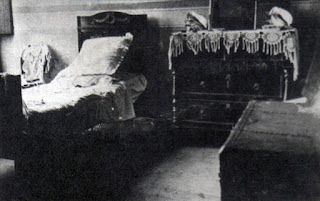 |
| Meneghetti's hiding place in São Paulo |
Briefly, Meneghetti worked as a bricklayer. He also met and
married the daughter, Concetta, of the owner of a restaurant he used to
frequent, but it was not long before he was tempted to put the Brazilian police
to the test. He broke into a gun store and
stole many weapons, planning to sell them on the black market.
In the event, he was caught quickly, sent to trial and, in
1914, sentenced to eight years in jail, with hard labour. But far from being
the end of his criminal career his subsequent escape marked the beginning of
the Meneghetti legend.
Consigned to solitary confinement in a disused well, he
managed to find a way out via a manhole, forced open the heavy iron cover and
found himself emerging in a city street. He ran away and was able to find a
hiding place far from the prison before it was noticed he had even gone.
For the next few years, he lived a life on the run, assuming
many identities and disguises, moving from city to city to stay ahead of the
police. After stealing some jewellery in
the city of Juiz de Fora he was caught in Rio de Janeiro but, falling back on
his earlier ploy of pretending to be insane, he was confined to a hospital,
from which he easily escaped.
He made his way back to São Paulo, making his home in the
district of Bixiga, an Italian community, with his wife and two children. Soon
a series of high-profile burglaries, always committed at the homes of wealthy
individuals in the swankiest part of the city, became a big story, with the newspapers convinced they were the work of the mysterious Meneghetti.
Each robbery brought new headlines and the press began to
portray Meneghetti as almost an heroic figure – “the good thief” – because he targeted
only the wealthy and because he broke in to homes only when they were empty and
therefore no one was ever hurt.
But the pressure on the police to capture him only
intensified. Eventually, in April 1926, they pinpointed his home in Bixiga and
arrived to search the premises, where a stash of jewellery and weapons was
found, only for Meneghetti to give them the slip. They arrested Concetta and put his children
into care.
 |
| The stash of equipment used by Meneghetti that was discovered by police after he was arrested |
He taunted police via a series of letters to the newspapers
after they failed to find his new hiding place, in an apartment only a few
minutes from the centre of São Paulo. Eventually, they set a trap for him, luring
him to an address where he was tricked into believing he would be able to see
his children.
Instead, once he was inside, the police laid siege to the
building in the biggest operation the city had scene. Even so, it was only after he had spent a
whole afternoon and evening jumping from rooftop to rooftop, that he was
eventually caught. According to witnesses, at point he was seen on a roof,
shouting to police: “I am Meneghetti, Caesar, the Nero of São Paulo.”
This time his jail sentence was 43 years. Meneghetti was blamed for the death of a
senior police commander, who failed to recover from a gunshot would suffered
during the siege, although the bullet that killed him did not match any of the
weapons in Meneghetti’s possession.
He was released after 19 years, yet was unrepentant,
continuing to break into houses.
Extraordinarily, he had passed his 90th birthday when,
arrested again after climbing on to the roof of a house, he finally told a
court he was calling it a day. Charges were dropped and he was released.
Meneghetti died in 1976, aged almost 98. His life story has
been the subject of numerous books and a documentary film.
 |
| Marina di Pisa from the air |
Travel tip:
As well as the city with its famous Leaning Tower, the Pisa
area can also offer tourists the attraction of Marina di Pisa, a seaside town
located 12km (7 miles) from Pisa that began to develop in the early 17th
century when Ferdinando I de’ Medici, Grand Duke of Tuscany, decided to move
the mouth of the Arno river in a bid to reduce the effect of silting up, which
he believed caused flooding in Pisa. On the left bank, a new customs building
was erected and fishermen began to build houses around this structure. The official
foundation of the town was in 1872. In June1892 a steam railway line from Pisa
to the Marina was opened, contributing to its rapid growth as a tourist
destination, which saw the opening of restaurants, hotels and beach resorts and
the construction of many beautiful Art Nouveau and neo-medieval villas. Many celebrities
chose to buy a house there, including Gabriele D’Annunzio, the writer, poet and
journalist.
 |
| Piazza dei Cavalieri in Pisa's medieval centre |
Travel tip:
Although it was the world-famous Leaning Tower that undoubtedly
put Pisa on the map, the city has much more to offer. The city centre has a
wealth of well-preserved Romanesque buildings, Gothic churches and Renaissance
piazzas and has a lively charm enhanced by the city’s reputation as a centre of
education. The University of Pisa, founded in 1343, now has elite status,
rivalling Rome’s Sapienza University as the best in Italy, and a student
population of around 50,000 makes for a vibrant cafe and bar scene.


